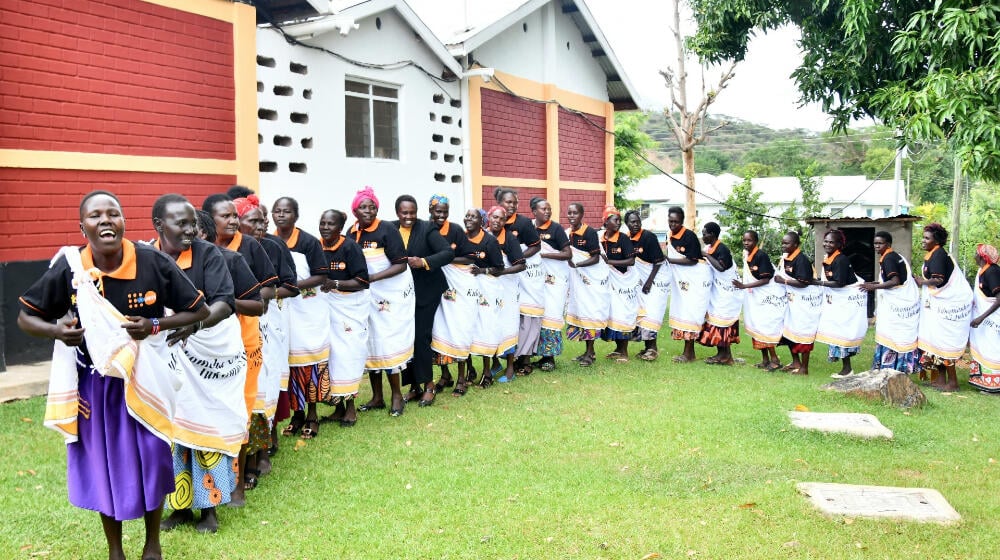Every survivor of Female Genital Mutilation (FGM) has a story. It often begins by recalling the moment they were informed that they would undergo the cut. They remember who was involved in the decision, the reasons given, and how they reacted to receiving the news.
They will tell you about the aunt or relative who held them down during the procedure, the neighbour who performed the cut, and the pain and suffering experienced in the aftermath. Affirmed by their own experiences and insights, survivors are uniquely positioned to lead efforts to end FGM.
Whether looking to change the social and cultural beliefs that drive the practice, bringing perpetrators to justice, or preventing more girls from undergoing FGM, survivor-led interventions are key to achieving an end to FGM as envisioned in both the Kenyan and global goals.
Since FGM was banned in Kenya in 2011, the country has made significant strides in reducing the practice. The 2022 Kenya Demographic and Health Survey shows a decline in FGM prevalence with the rate dropping to 15 percent in 2022, from 21 percent in 2014. This downward trend can be attributed to improved legal and policy frameworks, high-level political commitment at the presidential level, County leadership, and enhanced monitoring by the county Anti-FGM steering committees.
In addition, the UNFPA-UNICEF Joint Programme on the Elimination of FGM together with the Anti-FGM Board have been working with grassroots organizations in Kenya’s hotspot counties to engage over 15 ethnic groups, 11,000 community champions and role models, and establish a network of over 15,000 survivors.
Partners like Men End FGM Foundation in Samburu, World Vision Kenya in Elgeyo Marakwet, Umoja Development Organization in West Pokot, Center for Enhancing Democracy and Good Governance in Baringo, Center for Rights Education and Awareness in Narok, and women-led groups like Brighter Society Initiative in Tana River and Illaramatak Community Concerns in Kajiado, among others, are setting exemplary models by engaging men, elders, and morans in the fight against FGM.
The network of survivors is core to the implementation of community dialogues for girls and women and provides access to needed psychosocial support. In many instances, survivors live in remote environments, where they are exposed to multiple vulnerabilities including, poverty, forced marriage, gender-based and sexual violence.
The practice of FGM is almost universal in several counties in the Northern region with more than 70 percent prevalence of FGM, and the age of circumcision is getting lower. As a result of this practice, the majority of these girls may stop going to school and undergo child marriage, leading to serious physical, emotional, socio-economic, and health consequences.
We cannot overlook the impact that FGM has on the mental and sexual health of survivors. Girls and women who undergo FGM often experience long-term health consequences including scarring and tissue damage, as well as difficulty and pain when they menstruate, urinate, or have sexual intercourse. They may also experience life-threatening complications during childbirth. The psychological impact of FGM is also far-reaching, with survivors reporting feelings of anxiety, depression, and post-traumatic stress disorder.
For advocates striving to end FGM, the emotional strain from grappling with distressing cases can exact a heavy toll on their well-being. Prioritizing the social and health needs of FGM survivors through universal access to quality healthcare, information, and services is therefore paramount. This includes strengthening the skills of health, social, and legal professionals to deliver sensitive and informed care.
Despite the enactment of the Prohibition of FGM Act in 2011 and stakeholder efforts to protect girls from the practice, secrecy and deeply rooted cultural and religious beliefs continue to drive FGM, threatening the lives of 4.4 million girls globally. More importantly, the stringent enforcement of the existing Kenyan laws that prohibit FGM will ensure that survivors operate in an enabling legal environment to end FGM.
How do we eradicate FGM by 2030? Eliminating the stigma associated with FGM and creating safe spaces for open dialogue where survivors can share their experiences about FGM will help ensure the issue remains front and center of national and local dialogue.
As more survivors lend their voices to the cause, they become champions against this harmful practice which leads to increased awareness of why FGM needs to stop at the community level. Focusing key interventions on the counties in the North and North East that have high FGM prevalence is also advised.
The effectiveness of all FGM interventions depends, in part, on the ability of actors to understand the cultural and religious dynamics of the communities in which they work.
Women-led and FGM survivor-led organizations, morans, and grassroots youth networks that have an in-depth understanding of these dynamics are indispensable in ending FGM.
By working together, we can all ensure FGM prevention and response is recognized and supported, and that true collaboration is fostered through greater investments in survivor-led movements.
A joint opinion piece by the Anti-FGM Board CEO Bernadette Loloju, UNFPA Representative Anders Thomsen, and UNICEF Representative Shaheen Nilofer.


